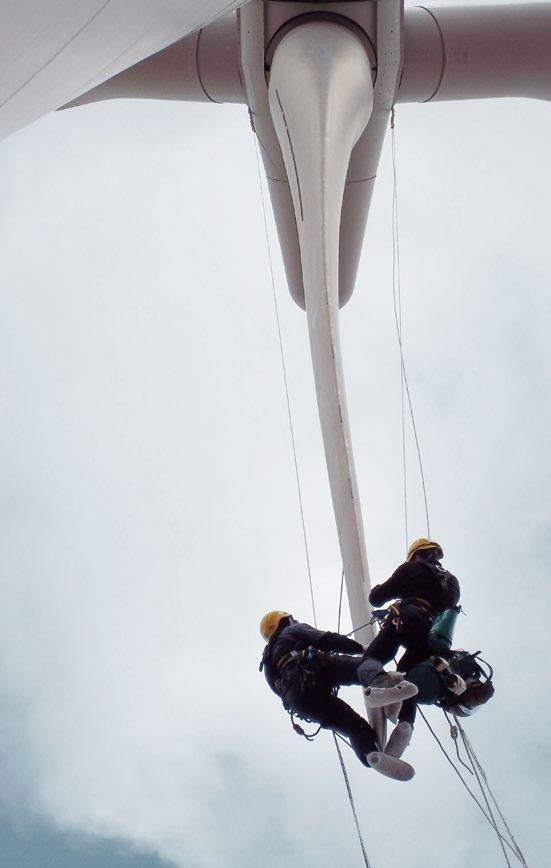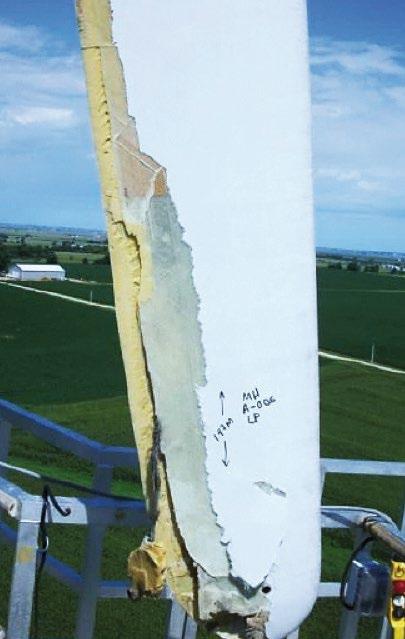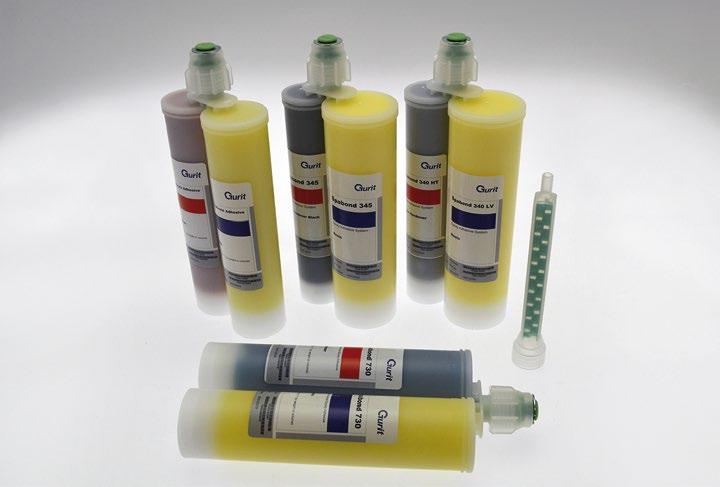
3 minute read
Efficient wind turbine repairs
The wind turbine repair industry is growing due to the high number of existing wind turbines approaching an advanced age in their service life and in need of more frequent maintenance.
It is vital that wind farms are kept in optimum working conditions to ensure they are running at the highest energy generation capacity. Furthermore, these increases in efficiency streamline costs for the turbine owners and supply more energy back to the grid. For these reasons, regular preventative maintenance is commonly carried out, increasing the demand for materials and repair solutions for on- and offshore wind turbine generators around the world.
Maintenance extending the service life

Wind turbine blade requiring repair
Wind turbines are typically designed for a service life of around 20 to 25 years. During this time, maintenance and repair procedures ensure the ongoing structural integrity of the wind turbines and prevent catastrophic failures. Problems need to be detected and repaired as fast as possible to keep downtime to an absolute minimum.
According to CompositesWorld.com, an out-of-service turbine can cost between USD 800 and 1600 per day, with most repairs taking one to three days. If a crane is required to repair or replace a blade, the cost can run up to USD 350,000 per week. An average blade repair can cost up to USD 30,000, and a new blade costs, on average, about USD 200,000.
Major corrective maintenance could be the replacement or repair of the gearbox, the main shaft, generator, bearings or one of the rotor blades. Blade damage can occur from handling, installation, weather conditions and environmental impacts. Deterioration during operation is most common, with lightning strikes, debris, wind and constant temperature changes battering the wind blades, causing blade surface erosion, critical bonding areas to start separating or even more compromising damage to the composite structure. Any of these critical components will likely render the turbine inoperable for some time and the current repair solutions are critically impacted by temperature and humidity, reducing the repair teams’ access to the turbines throughout the year.
Repair time reduced from two days to four hours
Efficient repair solutions contribute to minimizing downtime, for example through materials availability, processing and applied properties. Gurit has a range of OEM qualified & certified, low toxicity epoxy materials for all in-factory blade finishing and repairs including laminating and infusion resins, fillers, adhesives and gelcoats.
Building on its in-depth understanding of the materials from which wind blades are made, Gurit has developed new technologies and dedicated solutions for infield maintenance that act to extend the life cycle of wind turbine blades. Gurit offers a wide range of products available in two curing techniques: thermal & UV light. For example, the Ampreg™ low toxicity, thermally curing laminating system, is supplied in a range of dispensing solutions and small packs, ideally suited for use in challenging situations.
Gurit’s UV-curing technology-based RENUVO™ moves from a two-day operation using thermal solutions, to a fourhour operation using a new generation UV lamp. This saves on up-tower trips, allows covering several repairs in less time and reducing cure time from hours to minutes. The added health and safety benefits include less systems handling and limited risk of spillage. Modern UV lights have become compact and lightweight, so today UV-curing is an attractive option for both in-field and in-factory repairs.
Gurit wind blade repair portfolio
Gurit's repair portfolio applies to a wide range of repairs, from blade-finishing or bonding of ancillary or retrofitting of parts, either in the factory, where the de-molded blade can require some finishing, or repairs to in-field situations on the turbine in operation.
Examples are Ampreg™ Laminating, PRIME™ Infusion, Filling & Fairing, Spabond™ Adhesive, Gelcoat Repair System or the UV-Curing RENUVO™ range.

Spabond adhesive
Mathieu Cariou Director Business Development Wind, Gurit
A dedicated team at Gurit consisting of technical specialists, product developers as well as a worldwide distribution network with dedicated partners is being built up to address various stakeholders’ needs. For more information, contact our Wind Repair Sales Expert klavs.weis-fogh@gurit.com








